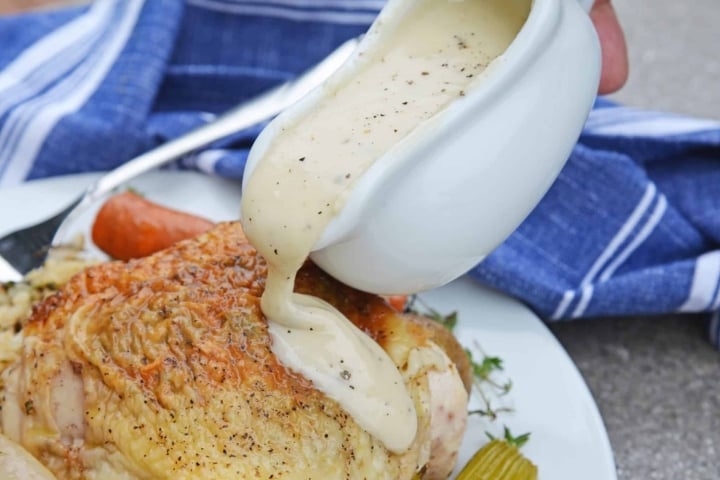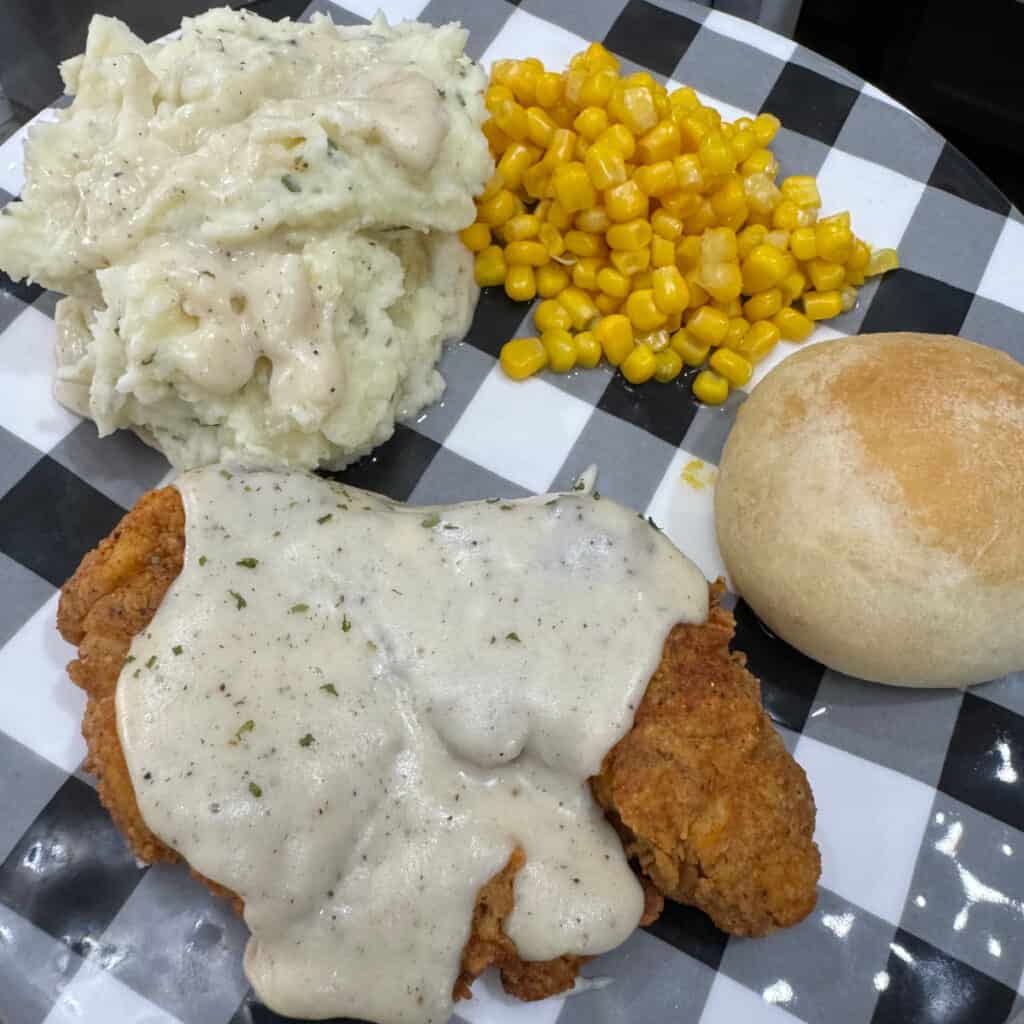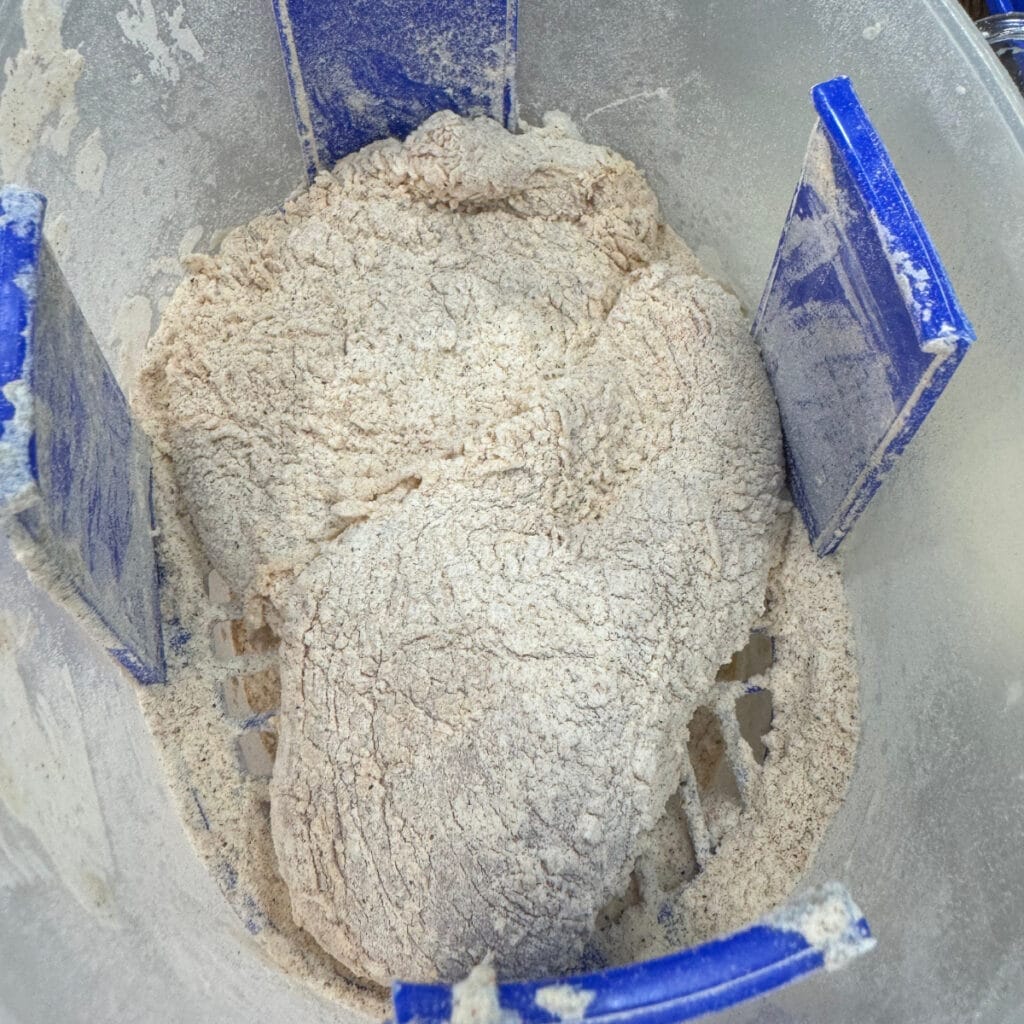Chicken gravy is a staple in many households. It can transform simple dishes into comfort food favorites. Making chicken gravy from scratch is easier than you think. With just a few basic ingredients and techniques, you’ll have rich, flavorful gravy anytime.
Why Make Homemade Chicken Gravy?
Store-bought gravy packets are convenient, but homemade has some major advantages:
-
Customizable flavor – Control the taste by adjusting herbs, spices, salt, pepper, etc.
-
Versatility – Use broth juices or pan drippings for varied gravy types.
-
Quality ingredients – Use real butter, stock, cream, and flour instead of preservatives.
-
Cost savings – Homemade costs just pennies per serving compared to store-bought.
With simple recipes, even novice cooks can whip up excellent gravy in 30 minutes or less. Keep reading to learn key tips and how-tos!
Chicken Gravy Ingredients
Most basic chicken gravy has 3 key components:
Thickener
Flour or cornstarch thickens the gravy. All-purpose flour adds richness, while cornstarch gives a glossy sheen. For 1-2 cups liquid, use:
-
3-4 tablespoons flour
-
2-3 tablespoons cornstarch
Fat
Butter, oil, or pan drippings provide moisture and flavor. Butter is most common. Use 1-2 tablespoons per 1-2 cups liquid.
Broth
Chicken broth or stock builds flavor. Use about 2 cups per 1⁄4 cup thickener. Low-sodium allows customizing saltiness.
With these basics, endless variation is possible by tweaking herbs, cream, spices, wine, and more.
Step-By-Step Instructions
Follow these simple steps for smooth, lump-free gravy every time:
1. Make a roux
-
Melt butter over medium heat.
-
Whisk in flour until smooth.
-
Cook, stirring constantly, until bubbling and golden brown.
2. Whisk in broth
-
Gradually pour in cold broth while whisking.
-
Whisk vigorously to prevent lumps.
-
Add 2 cups broth per 1/4 cup roux.
-
Bring to a boil, stirring regularly.
3. Simmer until thickened
-
Reduce heat and simmer 10-15 minutes, until gravy coats the back of a spoon.
-
For a thinner consistency, add more broth.
4. Finish with seasonings
-
Add salt, pepper, herbs, spices, or wine for extra flavor.
-
Stir in cream or milk for richness and sheen.
-
Taste and adjust seasonings as desired.
Gravy Variations
Change up the flavor with simple additions:
-
Pan drippings – Use instead of some or all of the broth for meaty depth.
-
Wine – Splash in white or red wine for acidity and complexity.
-
Onion/garlic – Cook in the butter before making the roux.
-
Herbs – Stir in sage, rosemary, thyme, or other herbs.
-
Spices – Cayenne, paprika, nutmeg all add warmth and nuance.
-
Cheese – Grate in parmesan, cheddar, or blue cheese.
-
Mushrooms – Sauté mushrooms and use the juices.
Serving Suggestions
Chicken gravy is endlessly versatile. Some tasty ways to use it:
-
Top mashed potatoes, rice, grits, or biscuits.
-
Spoon over poultry, pork chops, meatloaf, or sausages.
-
Mix into egg dishes like omelets, scrambles, or frittatas.
-
Drizzle over roasted vegetables like broccoli, Brussels sprouts, or cauliflower.
-
Toss with pasta or use as a pasta sauce.
-
Use as a base for pot pie, stew, or casseroles.
Chicken gravy can make mundane meals memorable. Keeping flavorful homemade gravy on hand is a great way to elevate everyday cooking.
Troubleshooting Common Issues
Making gravy seems simple, but it can go wrong. Here’s how to fix common problems:
Lumpy gravy – Whisk vigorously when adding roux and broth together. Pass through a strainer if needed.
Watery gravy – Simmer longer to reduce liquid or make a thicker roux.
Greasy gravy – Skim fat off the top before serving. Use less butter in the roux.
Bland gravy – Boost flavor with wine, spices, herbs, garlic, onion, or additional seasoning.
Burned roux – Start over if bits are extremely burnt. For just light browning, continue normally.
Curdled gravy – Whisk in a splash of milk to smooth it out. Strain out any curds.
With practice, you’ll be able to whip up a perfect gravy every time. Don’t be afraid to experiment until you find your ideal flavor and consistency.
Storing and Freezing Leftovers
Making extra gravy is a great way to save time later in the week. Here are some storage tips:
-
Refrigerate gravy in an airtight container up to 4 days.
-
To freeze, allow it to cool completely then pour into freezer bags or containers. Leave 1-inch headspace for expansion.
-
Frozen gravy keeps 4-6 months. Thaw overnight in the fridge before reheating.
-
Reheat gently on the stovetop or in the microwave, adding broth or milk if too thick. Don’t boil or gravy may curdle.
Having ready-made gravy on hand makes whipping up quick meals a breeze. Freeze in recipe-sized portions for maximum convenience.
Frequently Asked Questions
Can I make gravy without pan drippings?
Absolutely! While drippings add lots of flavor, you can make delicious gravy using just butter, broth, and seasonings.
Is gravy better made with flour or cornstarch?
Flour gives a richer, heartier texture. Cornstarch makes a glossier, slightly clearer gravy. Try both to decide which you prefer.
What meats besides chicken work for gravy?
The same method works for turkey, beef, pork, or other meat gravies. Simply use an appropriate broth and seasonings.
What liquids can I use besides broth?
Water, milk, cream, wine, juice, pan drippings all make tasty bases. You can even combine liquids for more complex flavor.
How thin or thick should gravy be?
This comes down to personal preference! Thin gravy is better for passing at the table while thicker, scoopable gravy is best for topping foods directly.
Conclusion
Learning how to make chicken gravy from scratch is an invaluable kitchen skill. With a simple roux, broth, and finishings, you can create a perfect gravy tailored to your taste. Experiment with different add-ins until you find favorites. Mastering homemade gravy will bring your comfort food to the next level.

Serve Country Fried Chicken and Gravy
Once the chicken and gravy is done it’s time to eat! I serve Country Fried Chicken and Gravy over some homemade mashed potatoes with corn and rolls. This is also good with some green beans or a side salad if you want more veggies!

Make Country Fried Chicken
Heat a large skillet over medium heat. Add 2/3 cup of oil and 2 tbsp of butter to the skillet.
While the skillet is heating up, dredge chicken in flour mixture, egg mixture, and back in the flour mixture.

Gently shake off any excess flour from the chicken and place on a plate.
Once the skillet is hot, add the chicken to the skillet and cook for a few minutes on each side.
The chicken will cook until golden brown, crispy, and it reaches an internal temp of at least 165 degrees with a meat thermometer.

My chicken reached that temperature after cooking for 6 minutes. Remove the cooked chicken from the skillet and place on a clean plate lined with paper towels. Set aside.
To make the gravy, remove most of the oil from cooking the chicken. I kept about 1/3 cup of the oil in the skillet.
Add 1/3 cup of flour to the hot skillet and stir well. Stir until the flour and oil are well combined and let cook for at least a minute or two.
Next, add 3 cups of milk and stir well. Stir well and cook on low heat until the gravy thickens.
Once the gravy reaches the consistency you want season to taste with salt and pepper and serve.
